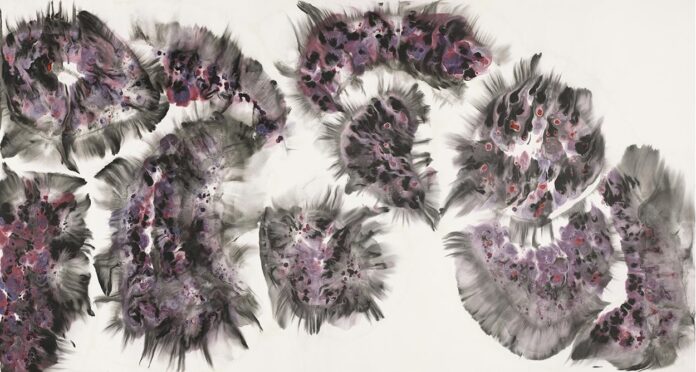
Primary sclerosing cholangitis (PSC) is a chronic liver disease that affects the bile ducts. It is characterized by inflammation and scarring of the bile ducts, which can eventually lead to liver damage and cirrhosis. PSC is a rare condition and its exact cause is unknown, but it is believed to be related to autoimmune factors.
Early diagnosis of PSC is crucial for managing the disease and preventing complications. Knowing the symptoms of PSC can help individuals seek medical attention and treatment early. In this article, we will discuss the common symptoms of primary sclerosing cholangitis and how it can be diagnosed and managed.
1. Jaundice
Jaundice is a common symptom of primary sclerosing cholangitis. It is characterized by the yellowing of the skin and eyes due to the buildup of bilirubin in the body. Bilirubin is a waste product produced when the liver breaks down old red blood cells. In PSC, the inflammation and scarring of the bile ducts can block the flow of bile, leading to the buildup of bilirubin and causing jaundice.
If you notice that your skin or the whites of your eyes are turning yellow, it is important to consult a healthcare provider for further evaluation and testing for PSC.
2. Fatigue
Fatigue is a common symptom of many liver diseases, including primary sclerosing cholangitis. The inflammation and scarring of the bile ducts can impair the liver’s ability to produce and store energy, leading to fatigue and tiredness. Individuals with PSC may experience persistent fatigue that is not relieved by rest.
If you are experiencing unexplained fatigue, it is important to discuss this symptom with your healthcare provider, especially if you have other symptoms of PSC.
3. Itching
Itching, also known as pruritus, is a common symptom of primary sclerosing cholangitis. The buildup of bile acids in the body due to the blocked bile ducts can lead to itching. The itching can be mild to severe and may affect different parts of the body, including the hands, feet, and abdomen.
If you are experiencing persistent itching without any apparent cause, it is important to seek medical evaluation to determine the underlying cause, including the possibility of PSC.
4. Abdominal Pain
Abdominal pain is a common symptom of many liver and biliary tract diseases, including primary sclerosing cholangitis. The inflammation and scarring of the bile ducts can cause abdominal pain, especially in the upper right quadrant of the abdomen where the liver is located. The pain may be episodic or persistent and can vary in intensity.
If you are experiencing unexplained abdominal pain, especially if it is accompanied by other symptoms of PSC, it is important to seek medical evaluation for proper diagnosis and management.
5. Fever
Fever is a common symptom of inflammation, and individuals with primary sclerosing cholangitis may experience recurrent low-grade fevers. The inflammation and scarring of the bile ducts can trigger an immune response, leading to fever. It is important to monitor and report any persistent or recurrent fevers to your healthcare provider for proper evaluation and management.
6. Chills
Chills are another common symptom of primary sclerosing cholangitis. The combination of fever and chills may indicate an ongoing infection or inflammatory process in the body. If you are experiencing persistent chills, it is important to seek medical evaluation to determine the cause and proper management.
7. Weight Loss
Unintentional weight loss is a common symptom of many chronic diseases, including primary sclerosing cholangitis. As the liver becomes impaired due to inflammation and scarring, it may affect metabolic processes, leading to weight loss. Individuals with PSC may experience unexplained weight loss despite maintaining their regular diet and activity level.
If you are experiencing unexplained weight loss, it is important to discuss this symptom with your healthcare provider to determine the underlying cause, including the possibility of PSC.
8. Nausea and Vomiting
Nausea and vomiting are common symptoms of many liver diseases, including primary sclerosing cholangitis. The impaired bile flow and liver function can lead to digestive disturbances, resulting in nausea and vomiting. Individuals with PSC may experience recurrent episodes of nausea and vomiting, especially after meals.
If you are experiencing persistent nausea and vomiting, it is important to seek medical evaluation for proper diagnosis and management, including the possibility of PSC.
9. Osteoporosis and Bone Fractures
Osteoporosis, a condition characterized by weak and brittle bones, is a potential complication of primary sclerosing cholangitis. The impaired bile flow and liver function can affect the absorption of essential nutrients, including calcium and vitamin D, leading to osteoporosis. Individuals with PSC may be at an increased risk of bone fractures due to weakened bones.
If you have been diagnosed with PSC, it is important to discuss the risk of osteoporosis and bone health with your healthcare provider to prevent and manage this potential complication.
10. Complications of Liver Disease
As primary sclerosing cholangitis progresses, it can lead to various complications of liver disease, including cirrhosis, liver failure, and bile duct cancer. It is important to monitor and manage PSC to prevent and minimize the risk of these complications. Regular medical evaluation and management are essential for individuals with PSC to maintain liver health and overall well-being.












